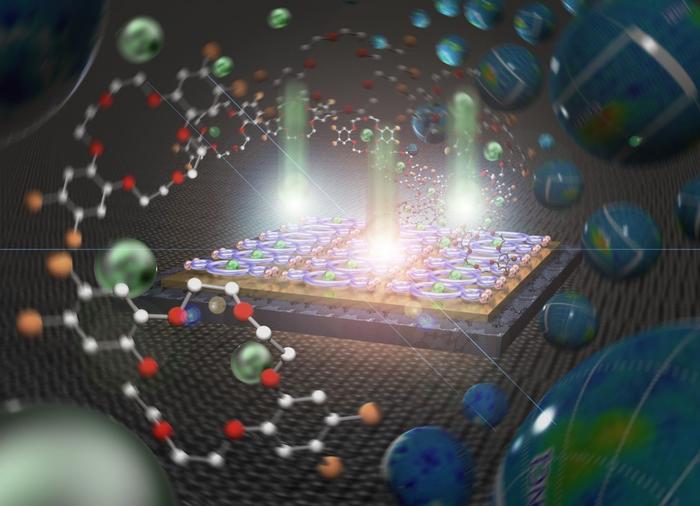| Jan 30, 2024 |
Showcasing precision nanocluster formation with molecular traps
(Nanowerk News) Nanoclusters (NCs) are crystalline materials that typically exist on the nanometer scale. They are composed of atoms or molecules in combination with metals like cobalt, nickel, iron, and platinum, and have found several interesting applications across diverse fields, including drug delivery, catalysis, and water purification.
|
|
A reduction in the size of NCs can unlock additional potential, allowing for processes such as single-atom catalysis. In this context, the coordination of organic molecules with individual transition-metal atoms shows promise for further advancement in this field.
|
|
An innovative approach to further reduce the size of NCs involves introducing metal atoms into self-assembled monolayer films on flat surfaces. However, it is crucial to exercise caution in ensuring that the arrangement of metal atoms on these surfaces does not disrupt the ordered nature of these monolayer films.
|
|
Now, in a recent study featured in the Journal of Materials Chemistry C ("On-surface growth of transition-metal cobalt nanoclusters using a 2D crown-ether array"), Dr. Toyo Kazu Yamada from the Graduate School of Engineering at Chiba University, along with Masaki Horie from the Department of Chemical Engineering at National Tsing Hua University, Satoshi Kera from the Institute for Molecular Science, and Peter Krüger also from the Graduate School of Engineering at Chiba University, have showcased the surface growth of cobalt atoms on molecular ring arrays at room temperature.
|
 |
| Researchers demonstrate the successful formation of functional nanoclusters using cobalt atom deposition on two-dimensional arrays of crown ether ring molecules. (Image: Masaki Horie from National Tsing Hua University)
|
|
Talking to us about this advancement. Dr. Yamada says, "This advanced method of functional nanocluster formation with atomic-scale precision can be utilized in the development of highly efficient catalysts or in quantum computing."
|
|
In the study, the team used ring-shaped molecular structures called "crown ethers," which contain benzene and bromine rings. These structures were used to trap and grow cobalt NCs on flat copper surfaces. The resulting cobalt NCs were of two sizes, 1.5 nm and 3.6 nm. To understand their properties and structure further, various techniques were employed, including low-temperature scanning tunneling microscopy and spectroscopy (STM and STS), angle-resolved photoelectron spectroscopy (ARPES) with low energy electron diffraction (LEED), and density functional theory (DFT) calculations.
|
|
The analysis revealed the formation of stable surface sites to which the cobalt atoms could attach. In addition, the formation of these stable surface sites was found to be influenced by the electronic hybridization (mixing) between the crown ethers and cobalt. Once the cobalt atom was trapped, it acted like a nucleation center, attracting other cobalt atoms to form an NC. Additionally, unlike the usual behavior of crown ether molecules in solution, these molecules did not trap the metal atom at the center of the crown ring. Instead, the metal atom was at the edge, because of the presence of bromine atoms at that location.
|
|
Discussing the long-term potential of these findings, Dr. Yamada says, "The use of this approach in applications such as single-atom catalysis, miniaturization of spintronics media, and quantum computing will contribute to the development of an information-based society in a way that reduces carbon dioxide (CO2) production."
|
|
In summary, the team successfully demonstrated the growth of cobalt NCs by exploiting the trapping potential of two-dimensional crown ether molecules on a copper surface. The chemical behavior of the crown ether molecules deviated from typical interactions observed in solution, by trapping cobalt atoms at the edge, and not the center. Importantly, the method demonstrated effective and large-scale production of NCs with well-defined size and morphology at room temperature.
|

